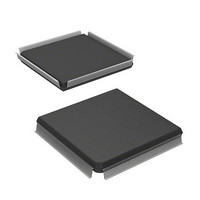HD6417751RF240V Renesas Electronics America, HD6417751RF240V Datasheet - Page 593

HD6417751RF240V
Manufacturer Part Number
HD6417751RF240V
Description
MPU 1.5/3.3V 0K PB-FREE 256-QFP
Manufacturer
Renesas Electronics America
Series
SuperH® SH7750r
Datasheet
1.D6417751RBP200DV.pdf
(1226 pages)
Specifications of HD6417751RF240V
Core Processor
SH-4
Core Size
32-Bit
Speed
240MHz
Connectivity
EBI/EMI, FIFO, SCI, SmartCard
Peripherals
DMA, POR, WDT
Number Of I /o
39
Program Memory Type
ROMless
Ram Size
48K x 8
Voltage - Supply (vcc/vdd)
1.4 V ~ 1.6 V
Oscillator Type
External
Operating Temperature
-20°C ~ 75°C
Package / Case
256-QFP Exposed Pad, 256-eQFP, 256-HQFP
Lead Free Status / RoHS Status
Lead free / RoHS Compliant
Eeprom Size
-
Program Memory Size
-
Data Converters
-
Available stocks
Company
Part Number
Manufacturer
Quantity
Price
Company:
Part Number:
HD6417751RF240V
Manufacturer:
Renesas Electronics America
Quantity:
10 000
- Current page: 593 of 1226
- Download datasheet (7Mb)
13. Bus State Controller (BSC)
13.3.12 Master Mode
The master mode processor holds the bus itself unless it receives a bus request.
On receiving an assertion (low level) of the bus request signal (BREQ) from off-chip, the master
mode processor releases the bus and asserts (drives low) the bus use permission signal (BACK) as
soon as the currently executing bus cycle ends. If a bus release request due to a refresh request has
not been issued, on receiving the BREQ negation (high level) indicating that the slave has released
the bus, the processor negates (drives high) the BACK signal and resumes use of the bus.
If a bus request is issued due to a memory refresh request in the bus-released state, the processor
negates the bus use permission signal (BACK), and on receiving the BREQ negation indicating
that the slave has released the bus, resumes use of the bus.
When the bus is released, all bus interface related output signals and input/output signals go to the
high-impedance state, except for the synchronous DRAM interface CKE signal and bus arbitration
BACK signal, and DACK0 and DACK1 which control DMA transfers.
With DRAM, the bus is released after precharging is completed. With synchronous DRAM, also, a
precharge command is issued for the active bank and the bus is released after precharging is
completed.
The actual bus release sequence is as follows.
First, the bus use permission signal is asserted in synchronization with the rising edge of the clock.
The address bus and data bus go to the high-impedance state in synchronization after this BACK
assertion. At the same time, the bus control signals (BS, CSn, RAS1, WEn, RD, RD/WR, CE2A,
and CE2B) go to the high-impedance state. These bus control signals are negated no later than one
cycle before going to high-impedance. Bus request signal sampling is performed on the rising
edge of the clock.
The sequence for re-acquiring the bus from the slave is as follows.
As soon as BREQ negation is detected on the rising edge of the clock, BACK is negated and from
next rising edge of the clock, bus control signal driving is started. Driving of the address bus and
data bus starts at the next rising edge of an in-phase clock. The bus control signals are asserted and
the bus cycle is actually started, at the earliest, at the clock rising edge at which the address and
data signals are driven.
In order to reacquire the bus and start execution of a refresh operation or bus access, the BREQ
signal must be negated for at least two cycles.
Rev.4.00 Oct. 10, 2008 Page 493 of 1122
REJ09B0370-0400
Related parts for HD6417751RF240V
Image
Part Number
Description
Manufacturer
Datasheet
Request
R

Part Number:
Description:
KIT STARTER FOR M16C/29
Manufacturer:
Renesas Electronics America
Datasheet:

Part Number:
Description:
KIT STARTER FOR R8C/2D
Manufacturer:
Renesas Electronics America
Datasheet:

Part Number:
Description:
R0K33062P STARTER KIT
Manufacturer:
Renesas Electronics America
Datasheet:

Part Number:
Description:
KIT STARTER FOR R8C/23 E8A
Manufacturer:
Renesas Electronics America
Datasheet:

Part Number:
Description:
KIT STARTER FOR R8C/25
Manufacturer:
Renesas Electronics America
Datasheet:

Part Number:
Description:
KIT STARTER H8S2456 SHARPE DSPLY
Manufacturer:
Renesas Electronics America
Datasheet:

Part Number:
Description:
KIT STARTER FOR R8C38C
Manufacturer:
Renesas Electronics America
Datasheet:

Part Number:
Description:
KIT STARTER FOR R8C35C
Manufacturer:
Renesas Electronics America
Datasheet:

Part Number:
Description:
KIT STARTER FOR R8CL3AC+LCD APPS
Manufacturer:
Renesas Electronics America
Datasheet:

Part Number:
Description:
KIT STARTER FOR RX610
Manufacturer:
Renesas Electronics America
Datasheet:

Part Number:
Description:
KIT STARTER FOR R32C/118
Manufacturer:
Renesas Electronics America
Datasheet:

Part Number:
Description:
KIT DEV RSK-R8C/26-29
Manufacturer:
Renesas Electronics America
Datasheet:

Part Number:
Description:
KIT STARTER FOR SH7124
Manufacturer:
Renesas Electronics America
Datasheet:

Part Number:
Description:
KIT STARTER FOR H8SX/1622
Manufacturer:
Renesas Electronics America
Datasheet:

Part Number:
Description:
KIT DEV FOR SH7203
Manufacturer:
Renesas Electronics America
Datasheet:











